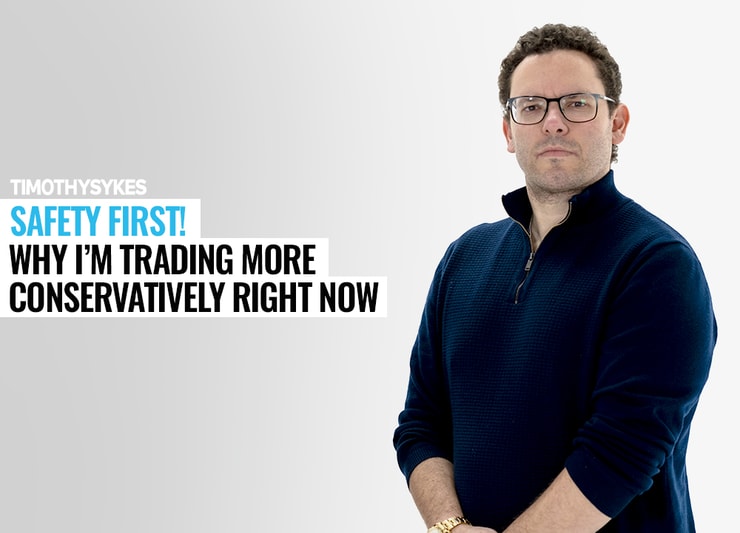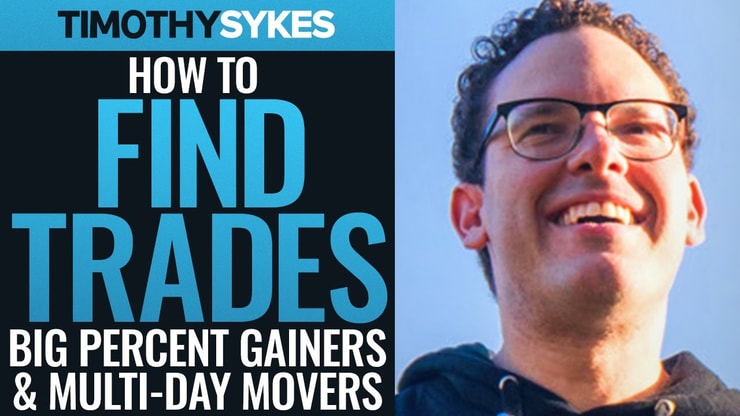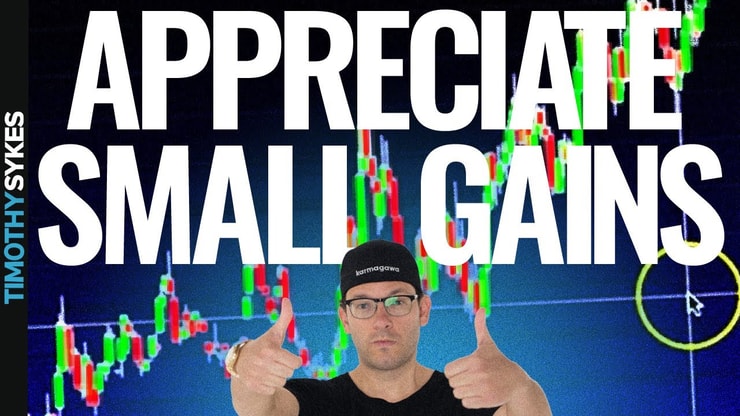Safety first! That might seem like a ridiculous sentiment in the penny stock niche.
On the one hand, it is ridiculous. After all, most of these low-priced stocks are doomed to fail in the long run … I talk about it all the time. That’s why I trade penny stocks instead of investing in them.
Penny stocks are an especially volatile slice of the stock market. For me, that’s part of the appeal. They can experience huge price spikes in brief periods of time.
But it’s also part of my motivation to stay conservative — especially right now.
We’ve seen some big shifts in the stock market lately. And while I believe that there are always opportunities no matter the market conditions … Adapting to the changing market is key.
Trading always carries some level of risk. There’s no changing that. But there are protective measures traders can take in a shaky market.
Nice little low stress day for me today, +$2.2k, now +$37k in March, watch https://t.co/SP5OfRSg0F to see my new video lesson detailing my ultra-safe $OZSC $SVAP trades in a truly ugly $QQQ market environment…retweet this if you understand it's all about SAFETY FIRST RIGHT NOW! pic.twitter.com/uXzGFya5US
— Timothy Sykes (@timothysykes) March 8, 2021
Here’s what traders need to know about adapting to the current market…
Table of Contents
Why I’m Being Extra Safe Right Now
I’ve been getting a LOT of DMs and questions from Trading Challenge students about why I’m being so conservative right now.
There are a few reasons…
For one, just look at what’s happening in the market right now.
The stock markets had a rough few weeks. Major indexes took some major hits. Last week, the S&P 500 briefly lost all of its 2021 gains…
Tech stocks tumbled, too.
Back in early February, Apple Inc. (NASDAQ: AAPL) was trading close to $140. This week shares traded under $120.
Then there’s Tesla Inc. (NASDAQ: TSLA). It was trading in the $800s in early February. Shares dropped to the $660s this week.
Yes, those are large-cap stocks. So maybe as a penny stock trader, you think they don’t matter.
Wrong.
Maybe you’re not trading TSLA, but you should definitely be watching it if you’re interested in lower-priced electric vehicle (EV) stocks. After all, they always seem to follow the sector leader.
Right now, people are spooked by what’s happening in the stock market.
So you at least must be aware of what’s going on in the market at large. It helps you make a game plan for future trades.
Trading ‘Conservatively’ — It’s All Relative
Before I get too deep into my ‘safety first’ campaign, I’ve gotta clarify…
Conservative trading is a relative term.
It’s not like I suddenly shifted to investing in blue-chip stocks or anything. I’m still trading volatile, big-percent gainers. I’m just approaching them a little differently in the current market.
Let’s look at an example of one of my trades from Monday, March 8…
Standard Vape Corp. (OTCPK: SVAP)
This OTC stock ran up 200% following news it was merging with a fintech play. I have StocksToTrade’s Breaking News Chat to thank for the lead. (Full disclosure: I’m a proud investor and developer of StocksToTrade.)
I saw a dip off of the highs, so I took my entry despite the fact that the stock was illiquid. The news had just hit — the interest and liquidity hadn’t ramped up yet.
This is what I mean when I say it’s all relative.
To someone with a long-term investing mindset, this trade probably seems like the scariest, riskiest thing in the world.
But this is my niche. I wasn’t scared to enter the trade, but I was more cautious than usual in my approach.
For example, typically when I dip buy, I want to see the stock test the day’s high. If it does, that means it might break the daily high.
And if I think it will do that, I might stay in the trade longer. Or I might take partial profits but keep a partial position to wait and see.
In the case of SVAP, it didn’t even test the day’s high. So rather than wait around, I got out fast. I still made a $1,269 profit.* But I wasn’t going to sit around hoping for more.
Even a month ago, I might have approached this trade differently. Adapting is crucial — it’s important to adjust your strategy based on how the market is right now.
(*Please note that my trading results are not typical. Most traders lose money. Individual results will vary. Trading is inherently risky. Before making any trades, remember to do your due diligence and never risk more than you can afford to lose.)
Safety First: Tips for Traders in a Shaky Market
What’s going on in the stock market?
Is it a correction? Are we about to see a big crash? Or is it the beginning of a bear market?
Whatever ends up happening, it doesn’t really matter to me. I know there will always be opportunities. It’s a matter of figuring out what’s in play in the current market and tweaking your strategies.
In the meantime, here are some important tips on how to stay steady in a shaky market…
More Breaking News
- Instacart Gears Up for Big Changes: What’s Driving the Buzz?
- ASP Isotopes Inc.: Is This the Time to Buy Amid Promising Market Prospects?
- Denison Mines Corp Stock: Is It On The Edge Of A Boom Or A Bust?
Don’t Believe the Hype
Promoters lure in newbies, claiming the stocks they’re pumping are the next big thing. Don’t believe the hype.
If I was "longterm" on any of these schemes getting crushed every day now like $HCMC $VPER $HIPH $ENZC $OZSC $MINE $SNPW $GNUS $CIDM $OPTI $AITX $ALYI $HQGE I'd rip the lying promoters a new one as they try to blame shorts (nobody shorts these POS its promoters/insiders selling!)
— Timothy Sykes (@timothysykes) March 3, 2021
I learned years ago to not fall for the hype. But I do try to take advantage of the short-lived price spikes that hype creates.
Sometimes I only hold a position for a few minutes … It’s all about trying to capture the meat of the move.
This is the essence of my penny stock trading strategy … It’s what has helped me make over $6.8 million in profits over the years.* And it’s the strategy I teach my Trading Challenge students.
It can be tempting to believe that a stock’s going “to the moon” … But I prefer a slow, steady approach. I aim to take singles and let small gains add up over time.
It’s Fine to Underestimate
Right now, I’m in ‘protect, protect, protect’ mode. I’ll gladly underestimate a stock if it means staying safe.
Traders have gotten spoiled recently … It’s been insane, especially in the OTC market.
Several of my top students have been recording record profits.*
I’ve had multiple students pass the million-dollar profit mark in 2021 — the two most recent are Jack S., aka “Jack #2” and Mariana.*
(*Please note that Jack and Mariana’s trading results are not typical. Most traders lose money. Individual results will vary. Trading is inherently risky. Before making any trades, remember to do your due diligence and never risk more than you can afford to lose.)
But right now, we’re just not seeing the same huge percent gains.
For example, on Monday, March 8, 2021, I dip bought Ozop Energy Solutions Inc (OTCPK: OZSC).
It wasn’t an ideal setup. The dip was a little weak. But there was a recent contract announcement, so I still saw value in the trade.
Because of my reservations, I took a small position — and I was prepared to cut losses quickly.
I didn’t lose — in fact, I made a $1,011 profit.* Sure, I could have made more if I’d taken a bigger position or stayed in the trade longer … But I’m not upset about it.
I’d rather underestimate a trade and have a small win than get overly aggressive and lose big.
Keep It in Perspective

Remember … It’s still possible to lose on a ‘good’ trade.
Sometimes, I dip buy a stock and it doesn’t bounce. If that happens, I cut my losses (rule #1!) and move on.
Trading is not about being right all the time. Nobody’s right all the time — as you can see from my Profit.ly stats, I have an approximately 75% win rate. That means I’m wrong about a quarter of the time.
It’s a bummer when you lose, but remember the big picture. Learn from the loss, try to figure out how to do better, and move on.
Remember — it’s a marathon, not a sprint. The market might be scary right now, but things can change fast. Who knows … Things could be completely different a month from now.
Better Safe Than Sorry…
I know, ‘safety first!’ is probably the last thing most traders want to hear.
Most traders just want hot stock picks and to get rich quick. But most traders fail.
So you can see why this is important stuff.
When the market changes, traders may need to change up their strategies. Adapting is vital for survival in the stock market.
Are you ready to study the past so you can be better prepared to adapt and grow? Consider applying for my Trading Challenge.
Do you understand my ‘safety first’ mindset? Leave a comment … I want to know what steps traders are taking to stay safe in the current market!







Leave a reply